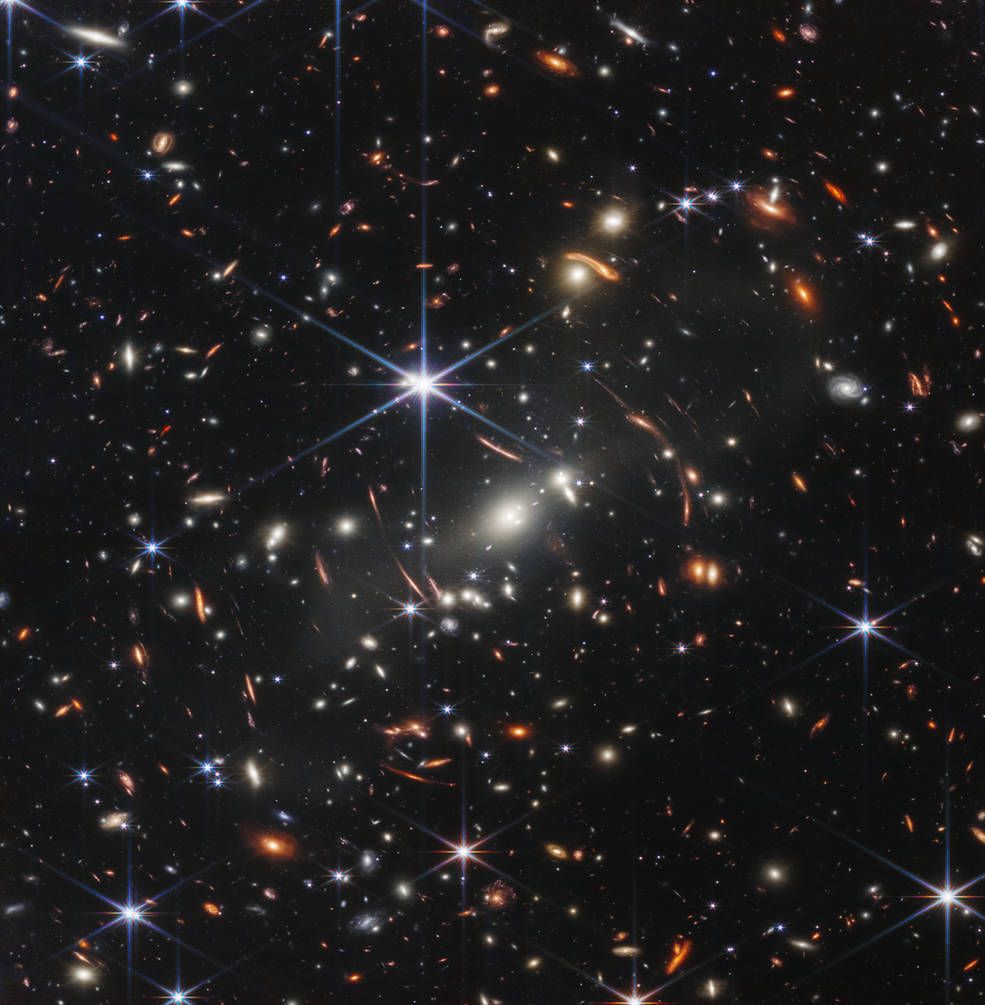
President Biden revealed the first full-color scientific image from NASA’s James Webb Space Telescope on Monday, showing off the power of the new observatory with one of the deepest images of the universe ever taken.
Why it matters: This long-awaited milestone will set the stage for the rest of the $10 billion telescope's mission to rework our understanding of how the universe evolved from the earliest galaxies to today.
Driving the news: The photo shows a galaxy cluster so massive that it warps the light of other galaxies behind it, acting as a magnifying glass in space and allowing the JWST to see distant, faint galaxies much farther away, according to NASA.
- "This slice of the vast universe covers a patch of sky approximately the size of a grain of sand held at arm’s length by someone on the ground," the space agency wrote in an image description.
- On Tuesday, NASA is set to reveal the rest of the JWST’s first images at 10:30am ET. You can watch the announcement live on NASA TV starting at 9:45am ET.
What they're saying: "You're seeing galaxies that are shining around other galaxies whose light has been bent, and you're seeing just a small, little portion of universe," NASA Administrator Bill Nelson said alongside Biden and Vice President Kamala Harris on Monday.
- "These images are going to remind the world that America can do big things," Biden said.
- "Now we enter a new phase of scientific discovery. Building on the legacy of Hubble, the James Webb Space Telescope allows us to see deeper into space than ever before and in stunning clarity," Harris added. "It will enhance what we know about the origins of our universe, our solar system and possibly life itself."
Between the lines: This first deep field photo comes from a long line of images like it taken by the Hubble Space Telescope.
- The Hubble’s first deep field was created when astronomers pointed the space observatory at a seemingly uninteresting patch of sky in 1995.
- The image — taken over the course of 10 days — was teeming with galaxies, some of which formed when the universe was just 500 million years old.
- Since then, astronomers have continued to use the Hubble to take deep photos of the universe, revealing even more galaxies light-years away.
The big picture: Now, the JWST is expected to change everything about how scientists understand the early history of our cosmos.
- By using infrared light, the telescope will be able to cut through cosmic dust and see farther into the past than ever before, revealing the first galaxies and stars to form in a nascent universe.
What to watch: The images NASA is set to release Tuesday are expected to put even more of the JWST's wide range of scientific goals on display.
- The first batch will reveal the fine details of star formation, an exoplanet's atmosphere, a cluster of galaxies and a planetary nebula, according to NASA.
Editor's note: This story has been updated with additional details after the reveal.



!["[T]he First and Fifth Amendments Require ICE to Provide Information About the Whereabouts of a Detained Person"](https://images.inkl.com/s3/publisher/cover/212/reason-cover.png?w=600)



